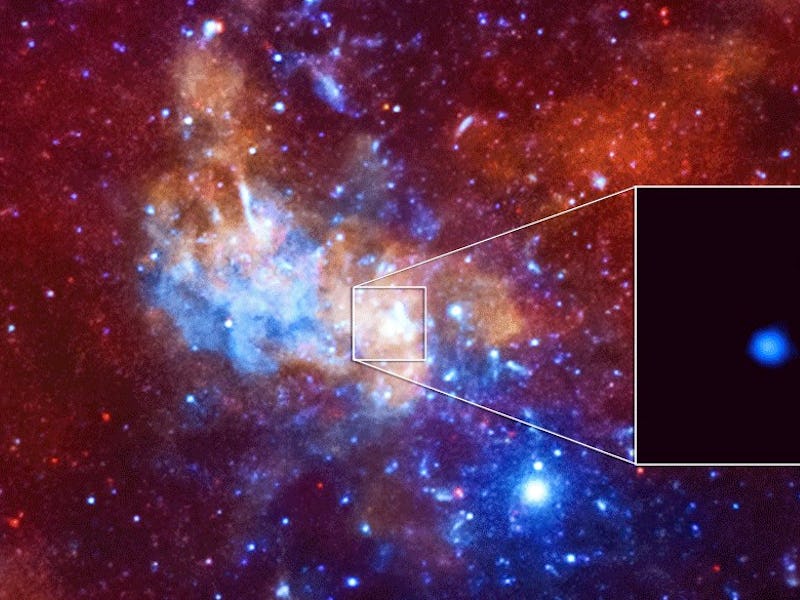Black Hole "Images" Could Throw Modern Physics Into Disarray
What truths does Sagittarius A* hold?

If all things go well, we’re about to finally see what a black hole looks like, as the Event Horizon Telescope connects six telescopes sprawled across the world and makes them work in tandem to image the supermassive black hole at the center our very own Milky Way galaxy. Yeah.
So, besides getting a glimpse at what a black hole might look like for the first time ever, what exactly is the point of capturing an image of a black hole? To be fair, Event Horizon won’t be trying to take a photo of the black hole itself — which is still impossible — but rather pick up visuals on the photons surrounding the black hole’s event horizon, which is essentially the outline that designates a “point of no return” for the black hole.
The ramifications actually run much deeper than just getting a visual. The telescopes, situated in observatories in Hawaii, Arizona, Mexico, Spain, Antarctica, and Chile, are all aimed at the event horizon for Sagittarius A*, the supermassive black hole 26,000 light-years away at the center of the galaxy.
Sagittarius A*
Any visual data could help ~ shed light ~ on exactly how gravity works around a black hole and to what extent the laws of quantum mechanics and Einstein’s theory of general relativity can be reconciled.
Or, the data could just as easily throw everything within modern-day physics into total disarray.
See, the century-old theory of general relativity is a weird thing. Objects like planets and moons exhibit a small form gravity in relation to more massive objects. Black holes in particular exhibit an extremely powerful gravitational pull. This is understood at a pretty elementary level — black holes are super dense, so therefore they would exhibit a bigger gravitational force on other objects — but it’s not really clear at a more nuanced level how this works. More specifically, it’s unclear exactly what distinguishes the event horizon from the rest of the black hole — and understanding how this difference works is key to getting a better sense of what the theory of general relativity is in the most extreme environments.
Apart from that, imaging a black hole should reveal much more information about the physical characteristics of these phenomena: why a black hole’s accretion disk might be small or big or thick or thin, why a black hole might spin, and why some produce incredibly weird jets of material.
Scientists are also keen to test out the theory of Hawking radiation — astrophysicist Stephen Hawking’s theory that black holes are slowly losing mass over the release of blackbody radiation thanks to the quantum effects near the event horizon.
All of which is to say: we don’t know how the physics in and around a black hole work. The data the Event Horizon Telescope collects could finally give us an understanding of the complex mechanics that govern what happens — and also reveal the extent of the interplay between the ideas put forth by general relativity, and those of quantum physics.
The results could confirm a lot of what Einstein, Hawking, and other physicists have theorized over the last 100 years. But if the results don’t support those ideas, we’re left with a ton of other questions, and only the certainty that we know very little about how the universe really works.